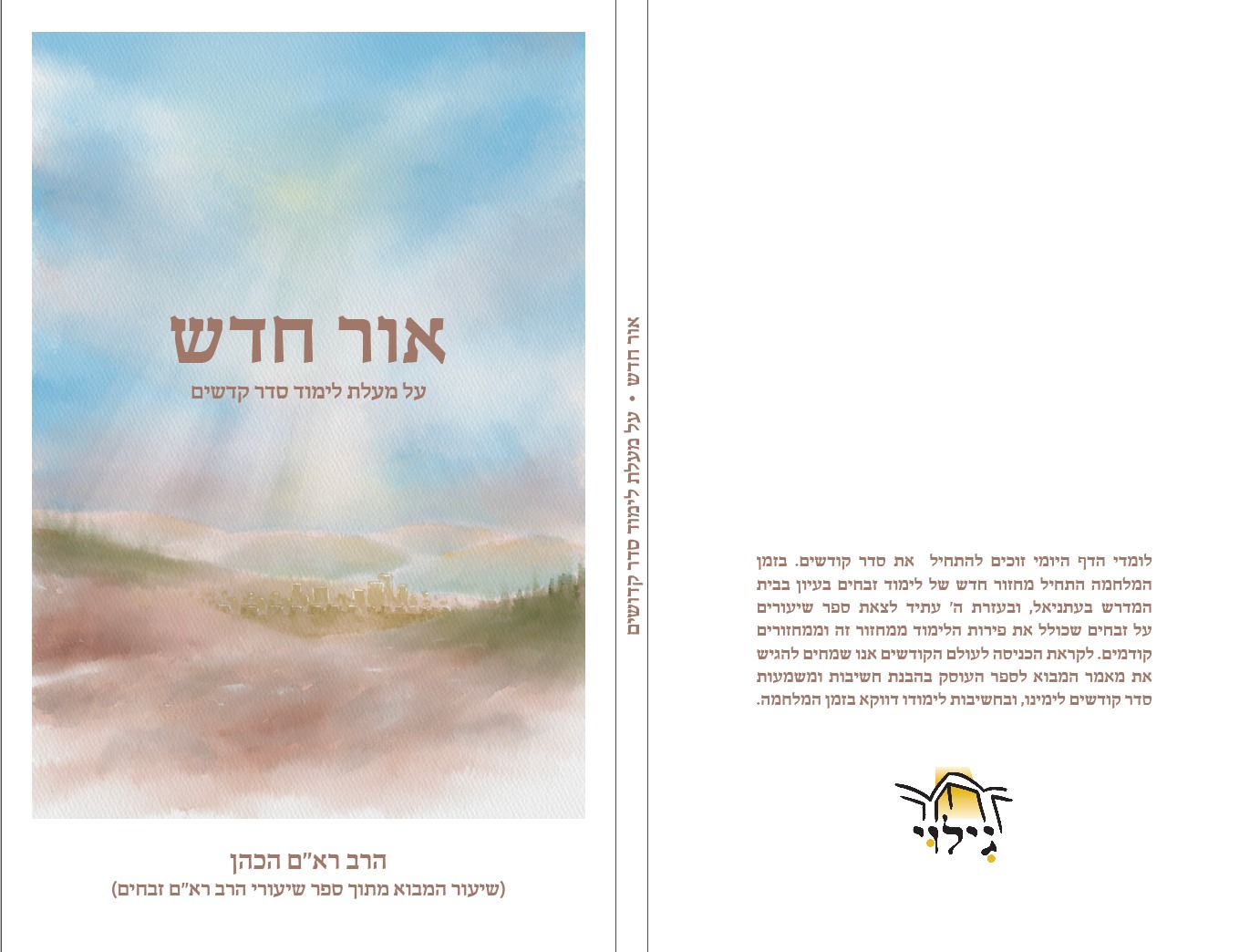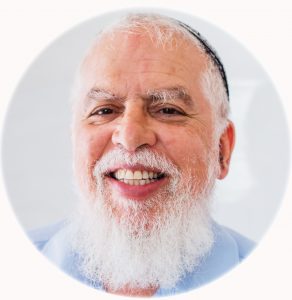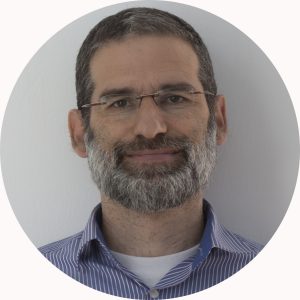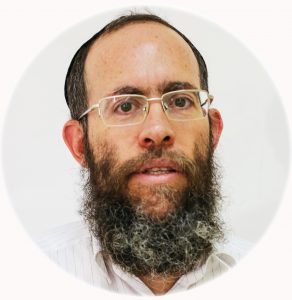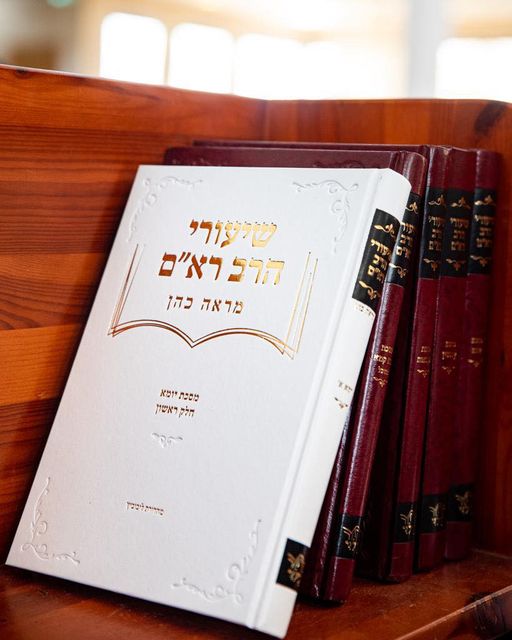נושאים
Translated by Netzach Sapir
Avraham’s life journey comes to a close in Parshat Chayei Sarah. His very name, “Avraham,” hints at the fulfillment of the promise that G-d made him in the previous parsha, that he will be a “father of many nations,” “av hamon goyim” (Bereshit 17:5). Today that promise has been fulfilled. Most of the world’s people – Jews, Christians and Muslims – see Avraham as their forebear, seek to walk in his path, and name their children after him
Avraham is renowned for being the first person to believe in the one G-d and for the close relationship he developed with his Creator. (Muslims even refer to him by the moniker “Al Halil” – the friend.) Additionally, Judaism understands Avraham’s legacy to be more spiritual than ethnic. Halachically speaking, a convert to Judaism, despite having been born to non-Jewish parents, recites in his or her prayers “As G-d swore to our fathers,” and the Rambam explains: “as it was said to Avraham, ‘the father of many nations I have made you’ (Bereshit 17:5), [as such] he is the father of the entire world, for [all] enter under the wings of the shechina” (Hilchot Bikurim 4:3). Avraham is the father of the western religions. Because of him, the western world has rejected idolatry and replaced it with deep faith in one G-d.
During my visit to India I realized the degree to which this reality cannot be taken for granted. When I arrived at the Shivinanda Ashram in Rishkish I asked the vice president there, Swami Nirliftananda, if Hinduism could ever exist without idols. He shook his head, saying that without idols there could be no way to for the masses to connect to god.
Though the gap between eastern and western culture with regard to idol worship is large, there are Jewish sources that indicate certain similarities between Judaism and the eastern religions. As a matter of fact, those sources indicate that the eastern religions also draw from Avraham. This suggestion comes from the verse which states that Avraham gave gifts to his concubines who departed for the eastern lands (Bereshit 25:6). According to the Zohar (Vayera 100b), the gifts were gifts of wisdom, and as an example of this, the Zohar tells the story of Rebbe Aba who found a book of wisdom from the “people of the east,” and noticed a similarity between what was written in it and the Torah. Despite that, Rebbe Aba cautioned against reading such books, for they had idolatrous aspects, and he feared that reading them could lead one astray and away from the service of G-d. I will now address some of the fundamentals in the similarities and differences between Judaism and some of the eastern religions.
The Dalai Lama and the Prayer for Rain
The western religions are based primarily on dualism – a clear separation between G-d and the world. The Creator and His creations are separate entities, and therefore it is possible to engage in dialogue with G-d and cultivate a relationship with Him. G-d created the world, directs it and acts within it. Man speaks to G-d and prays to him, studies His way, seeks to learn from Him and strives to hear His voice. It is possible to have a real relationship with G-d, and to relate to him with love, awe, or even anger. According to this view, G-d is grasped in human terms and is seen as a father, a lover, a brother.
Eastern religions, on the other hand, are not dualistic. According to their approach, G-d and the world are one, and religious experience consists of acknowledging the oneness which unifies everything. (In Hinduism this is the Brahman, the “infinite expanse,” and in Buddhism it is called nothingness or emptiness.)
In order to demonstrate the difference between the two ways of relating to G-d, I will share a story I heard from my friend Rav Menachem Fromen, of blessed memory. On the Dalai Lama’s first visit to Israel, he participated in an interfaith gathering next to the Sea of Galilee. That year there was a terrible drought, and Rav Fromen, who had also been invited to the conference, called the religious leaders together to offer a joint prayer for rain. Rabbis, Sheiks and Priests stood together and begged G-d to open the heavens. The Dalai Lama discreetly whispered to Rav Fromen that he doesn’t believe in “things like this.” When everything is One, he said, there is no place for such a request. Only when G-d is seen as an independent entity can one turn to Him with prayer and requests.
The difference between the two approaches points to the basic difference between “being” and “doing.” In a reality where all is one, the purpose of Man is to look beyond the illusory multi-faceted nature of the world and perceive the underlying unification. But when G-d is seen as a being which exists and acts independently of the boundaries of the world, Man’s challenge is active. He does not exist merely for internal contemplation; he is called on to perfect reality.
Two Levels of G-dliness
Rav Kook addresses the tension between the two approaches in his book Shemonah Kvatzim (1:65). He says that the Jewish perception of G-d has two levels: on the revealed level of reality, G-d and the world are two separate entities and there is a relationship which is conducted between them; but on a deeper, internal level of reality, all is really one, all is divine. The “revealed” Jewish sources – Tanach, Talmud and Halacha – deal for the most part with the personal G-d to whom we relate, whereas the mystical Jewish sources – Kabbalah and Chassidut – discuss the internal, hidden nature of the Torah, and the presence of G-d in all elements of reality.
In order to understand the complex relationship between G-d and the world it is helpful to use the metaphor of the love between a man and woman. In order for there to be love between the partners, each one must have a place in which he or she can be independent of the other, separate in personality and experience. Within this space that exists between them, the couple can begin to approach each other to open up to each other, to develop their relationship and to grow their love. At the same time, ideally, even in the places of difference, the couple remains one and experiences life as a unit. The famous story about Rebbe Arye Levine, who went to the doctor with his wife and told him “my wife’s foot is hurting us,” aptly illustrates the paradigm.
We could even say that love itself is the constant, formative tension that exists between a couple’s desire to be one and their need to retain their individuality. On a revealed level, a man and a woman are two beings, and they recognize each other as separate from themselves, but internally they are one – “bone of my bone and flesh of my flesh,” (Bereshit 2:23) as Adam said in the Garden of Eden. Such is the relationship between G-d and the world.
This tension has its roots in the very creation of Mankind, according to the Midrash. The first human being was created as a single, double-sided entity – one side male, one side female. In this position, there was no awareness of the other, and the connection between the two was, in the kabbalistic language, “back-to-back.” Then G-d separated the being into two, man and woman, and so they were able to re-unite – “and he shall attach to his wife, and they will be one flesh” (Bereshit 2:24), but this time the connection is “face-to-face,” allowing the partners to see each other and cultivate a loving relationship.
Om and Shalom
The word “Yoga” means the unification of experience. People who practice Yoga often end a session by reciting “om,” which expresses the expansion of the infinite and the unification of existence, according to the Indian tradition. I once had a Jewish teacher who would end every yoga lesson by reciting “shalom.” Without being aware of it, he touched on a very deep idea. The similarity between “om” and “shalom” is not random[1] and it demonstrates the similarities and differences between Judaism and the spirituality of the Far East.
First of all, both “om” and “shalom” are associated with G-d: As we said, “om” in Hindi means infinity and according to the Zohar (Vayera 108b) it is one of the names of Hashem. According to the Midrash, “shalom” is one of G-d’s names as well (Vayikra Raba, Parsha 9:9).
Another point of similarity is the usage of both words for conclusion or closure – “om” is used to conclude ceremonies and in some sacred books, like the Upanishads (Hindu sacred texts), om is the final word. The word “shalom” also concludes many prayers – birkat hamazon (“Hashem yevarech et amo Yisrael b’shalom”), the Amidah (hamevarech et amo Yisrael b’shalom”), Kaddish (“oseh shalom bimromav, hu ya’aseh shalom aleinu v’al kol Yisrael”) and the blessing of the Kohanim (“v’yasem lecha shalom”). In the Talmudic literature, “shalom” is the final word of the Mishna and of many tractates of Gemara.
Both “om” and “shalom” direct us toward unity and harmony. At the heart of the Sefer Yetzirah, one of the most ancient kabbalistic books, is the belief that language does not only have the power to describe reality, it can effect it, shape it and create within it. According to the Sefer Yetzira, the three cornerstones (“imot”) of the Hebrew alphabet are Alef, Mem and Shin. Each one corresponds to one of the basic elements: Mem for water (“mayim”), Shin for fire (“eish”), and Alef for air (“avir”) (Sefer Yetzirah 3:4). These three cornerstones show the dialectic between water and fire, where air represents the balance between them (ibid 2:1).
The Sefer Yetzirah then describes the sounds of these three elementary letters: “three imot [alef, mem and shin] – Mem is still, Shin whistles, Alef is air and wind which decides between them” (ibid). The Ra’avad in his commentary of Sefer Yetzirah reveals a secret: “‘Mem is still’ – this means the thin, still voice.” The “thin, still voice” is what Eliyahu hears when Hashem reveals Himself to him on the Mountain of G-d, Mount Chorev, when Eliyahu runs there fleeing his pursuers (Malachim I ch. 19). The still, quiet sound of the letter “Mem” is especially similar to the quiet, mellow sound of the “om,” which is thought to represent the spiritual unification of experience.[2] As we saw above, in the Sefer Yetzirah “Mem” symbolizes water. The eastern cultures also see a tight bond between “om” and water. One well known expression of this can be found at the end of Herman Hesse’s book Siddhartha (which is a sort of life story of the Buddha), when the monks that live next to the river merit to hear its voice – “om.”
East is Water, West is Fire
Water and fire represent eastern and western culture. Water represents calm. In the basic book of the Dao, the Dao De Jing, water is compared to the Dao itself (the infinity which is impossible to define and from which all existence flows), and the book praises water and its qualities – soft and flexible, yet it moves with great power and can eventually overcome even the most stubborn obstacles. The Dao even encourages passivity and inaction in relation to reality (vu-vey) – one might call it “going with the flow.” Many other eastern approaches are similar in that enlightenment is achieved by accepting reality as it is, and seeking to flow within it, a process which takes place primarily in a person’s consciousness and is not determined by his or her actions. The voice of the river is the “om.”
Fire, on the other hand, can be seen as the foundation of western culture. The western calendar follows the sun. The holy day of Christianity, the western religion, is Sunday, the day of the sun. According to Greek myth – which is in many ways the underlying mythology of western culture – civilization begins when Prometheus steals fire from the gods and gives it to the mortals. Fire is the symbol of active power, transforming and changing reality. Progress, the desire to make an impact and “do something” and the drive toward advancement – these are foundations upon which western culture exists.
Shalom – The Connection between Fire and Water
The word “shalom” contains the word “om” with a “Shin” added to it. Rebbe Nachman of Breslov, drawing on the Zohar, sees “shalom” as a connection between water and fire:
And what is peace? That which connects two opposites, as our Sages of Blessed Memory commented (Zohar Vayikra 12b) on the verse, “He Who makes peace in the heights” (Iyov 25:2). There is the angel of fire, and there is the angel of water, and they are opponents, for water extinguishes fire, but Hashem makes peace between them and brings them together (Likutei Moharan, Torah 80).
With this Zohar in mind we can see why the root of the word “shalom” is the same as that of the word “shalem” – “whole” or “complete.” The world is complex and multi-faceted, and peace is the state when all the pieces are harmonized into a single, complete whole, even the ones which would appear to be contradictory. Indeed, from the Sefer Yetzira we see that the very word “shalom” is a composite of opposites: the Shin of fire and the Mem of water.
Jews are “Semites,” for they are descendants of Noah’s son Shem (spelled Shin-Mem). Understanding Judaism’s place as the meeting point of fire and water, this term suddenly has a new significance. Perhaps it can even shed some light on the long history of anti-Semitism that the people of Israel have experienced over the millennia. Some nations have attacked us for the elements of fire that we carry, some for the elements of water, and some for the nerve to try to combine the two.
The City of Friendship
This week’s parsha doesn’t only call on us to examine our relationship with distant nations, but also on the ones who live close by. The parsha describes Avraham’s purchase of the Cave of Machpela and the burying of Sarah, his wife, in the Cave. Every year, on Parshat Chayei Sarah, masses of Jews flock to the Cave of Machpela in Chevron (Hebron) in order to pray by the graves of their forefathers and foremothers. The holy site has become a point of contention in the Jewish-Arab conflict. Among the many atrocities that have taken place there, two stick out: In 1929, Chevron’s Jewish inhabitants were massacred by their Arab neighbors, which ended the Jewish community there, and, from the other side, the devastating murder of dozens of devout Muslims praying in the Cave by a Jew in 1994 is seared into the hearts of many.
In the internal Israeli dialogue, the fate of Chevron is an explosive issue. But our parsha shows that there is an alternative. Despite the tension and differences between Avraham’s two sons, Yitzchak and Yishmael, when their father dies, they come together to the Cave of Machpela to bury him: “And Avraham passed on and died, at a good age, old and satisfied, and he was gathered unto his people. And Yitzchak and Yishmael his sons buried him in the Cave of Machpela, in the field of Efron son of Tzohar the Hittite on the edge of Mamre” (Bereshit 25:8-9).
The verse uses the phrase “and he was gathered unto his people” to describe Avraham’s death, and it seems that in so doing it hints at a moment of reunion and conciliation in Avraham’s family. The verse also makes a point of mentioning that Yitzchak and Yishmael are sons of Avraham. Perhaps the text bothers to include this obvious and simple fact not just to share a biographical detail, but to relate an important message. My connection to my forefather’s grave does not obligate me to reject the connection another feels to it. The legacy of Avraham belongs to many. It is a great honor for Avraham when all of his sons gather at his grave to honor his memory and pray to his G-d, the one G-d, the G-d of Avraham.
This was the spirit that guided my friend, Rav Menachem Fromen, of blessed memory, when he organized joint prayers between Jews and Muslims at the Cave of Machpela. Chevron, Rav Fromen would say, is called “Al-Halil” in Arabic, which means “the friend,” and according to the Midrash, “Chevron” comes from the Hebrew word for friend, “chaver.” May it be His will that Chevron should once again be a city of friendship, and that our shared history bring peace and brotherhood to us and our neighbors.
[1] Not only does “shalom” contain “om” within it, but some have said that the “om” symbol resembles a Shin and a Mem connected, with a Vav above them, spelling out most of the word “shalom.”
[2] In his commentary to the Sefer Yetzirah, Rabbi Aryeh Kaplan asserts that the similarity between the silent sound of the “Mem” and the “om” is certainly more than merely a coincidence.









